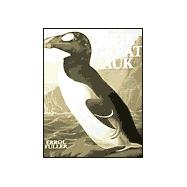| Prologue | 15 | (3) | |||
|
18 | (4) | |||
|
22 | (8) | |||
|
30 | (4) | |||
|
34 | (18) | |||
|
52 | (8) | |||
|
60 | (20) | |||
|
80 | (8) | |||
|
88 | (32) | |||
|
120 | (122) | |||
|
242 | (100) | |||
|
342 | (14) | |||
|
356 | (18) | |||
|
374 | (22) | |||
|
396 | (8) | |||
|
404 | (12) | |||
| Appendix 1 The Missing Birds of 1844 | 416 | (4) | |||
| Appendix 2 The Bidwell Photographs | 420 | (13) | |||
| Bibliography | 433 | (10) | |||
| Index | 443 |








